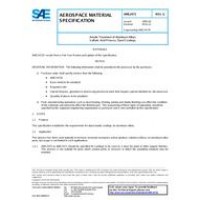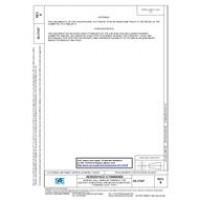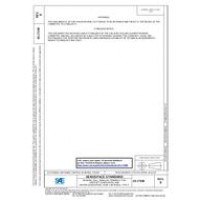SAE J403_200912
- Chemical Compositions of SAE Carbon Steels
- standard by SAE International, 12/07/2009
- Category: SAE
$81.00
$41.00
For years the variety of chemical compositions of steel has been a matter of concern in the steel industry. It was recognized that production of fewer grades of steel could result in improved deliveries and provide a better opportunity to achieve advances in technology, manufacturing practices, and quality, and thus develop more fully the possibilities of application inherent in those grades.
Comprehensive and impartial studies were directed toward determining which of the many grades being specified were the ones in most common demand, and the feasibility of combining compositions having like requirements. From these studies, the most common grades of steel have been selected and kept in the current revision. The cast or heat chemical composition limits or ranges of these grades are given in Tables 1, 2, 3A, and 3B. These cast or heat limits or ranges are subject to standard variations for product analysis as given in SAE J409. Since AISI is no longer issuing steel grade designations, grades listed in this document are SAE grades.
It is recognized that chemical compositions other than those listed in the previously mentioned tables will at times be needed for specialized applications or processing. When such a steel is required, the elements comprising the desired chemical composition are specified in one of three ways: (a) by a minimum limit, (b) by a maximum limit, or (c) by minimum and maximum limits, termed a range.
Standard cast or heat analysis limits and ranges for the various elements of carbon steels are given in Table 4. In this table, range is the arithmetical difference between the minimum and maximum limits (that is, 0.19 to0.25 is a 0.06 range). These cast or heat limits and ranges are also subject to standard variations for product analysis as given in SAE J409.
ISTC Division 1 has developed a procedure which allows for the maintenance of the grade lists in this document. This will involve conducting an industry-wide survey to solicit input. This survey will be conducted at a frequency deemed necessary by the technical committee.
 PDF
PDF
All of our standards document are available in PDF (Portable Document Format), an electronic, downloadable format.You will be able to download the file in your account downloads.
 Multi-User Access
Multi-User Access
After purchasing, you have the ability to assign each license to a specific user.
 Printable
Printable
At any time, you are permitted to make printed copies for your and your members' reference use.





